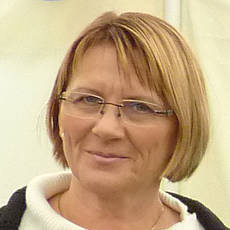Numerical Analysis: Inverse Problems – Theory and Applications
A special issue of Mathematics (ISSN 2227-7390). This special issue belongs to the section "Difference and Differential Equations".
Deadline for manuscript submissions: closed (31 December 2021) | Viewed by 32505
Special Issue Editor
Interests: numerical and applied mathematics; linear and nonlinear inverse ill-posed problems; regularization methods; numerical methods for inverse Sturm-Liouville problems; applications in atmospheric physics
Special Issues, Collections and Topics in MDPI journals
Special Issue Information
Dear Colleagues,
This Special Issue, “Numerical Analysis: Inverse Problems - Theory and Applications”, will be open for the publication of high-quality mathematical papers in the area of linear and nonlinear inverse ill-posed and well-posed problems.
A plenty of problems in mathematics, economics, physics, biology, chemistry, engineering, in particular, e.g., optics, radar, acoustics, communication theory, signal processing, medical imaging, computer vision, geophysics, oceanography, astronomy, remote sensing, natural language processing, machine learning, non-destructive testing and other disciplines can be reduced to solving an inverse problem in an abstract space, e.g., in Hilbert and Banach spaces. It is called an inverse problem because it starts with the results and then calculates the causes. Solving inverse problems is a non-trivial task that involves many areas of Mathematics and Techniques. In case the problem is ill-posed small errors in the data are greatly amplified in the solution, therefore, regularization techniques using parameter choice rules with optimal convergence rates are necessary.
While inverse problems are often formulated in infinite dimensional spaces, limitations to a finite number of often noisy data, and the practical consideration of recovering only a finite number of unknown parameters, may lead to the problems being recast in discrete form. In this case the inverse problem will typically be ill-conditioned.
Papers involving all those above mentioned topics are welcome. Moreover, this special issue gives an opportunity to researchers and practitioners to communicate their ideas.
Prof. Dr. Christine Böckmann
Guest Editor
Manuscript Submission Information
Manuscripts should be submitted online at www.mdpi.com by registering and logging in to this website. Once you are registered, click here to go to the submission form. Manuscripts can be submitted until the deadline. All submissions that pass pre-check are peer-reviewed. Accepted papers will be published continuously in the journal (as soon as accepted) and will be listed together on the special issue website. Research articles, review articles as well as short communications are invited. For planned papers, a title and short abstract (about 100 words) can be sent to the Editorial Office for announcement on this website.
Submitted manuscripts should not have been published previously, nor be under consideration for publication elsewhere (except conference proceedings papers). All manuscripts are thoroughly refereed through a single-blind peer-review process. A guide for authors and other relevant information for submission of manuscripts is available on the Instructions for Authors page. Mathematics is an international peer-reviewed open access semimonthly journal published by MDPI.
Please visit the Instructions for Authors page before submitting a manuscript. The Article Processing Charge (APC) for publication in this open access journal is 2600 CHF (Swiss Francs). Submitted papers should be well formatted and use good English. Authors may use MDPI's English editing service prior to publication or during author revisions.
Keywords
- Inverse problems
- Ill- and well-posed problems
- Regularization
- Inverse Sturm-Liouville problems





